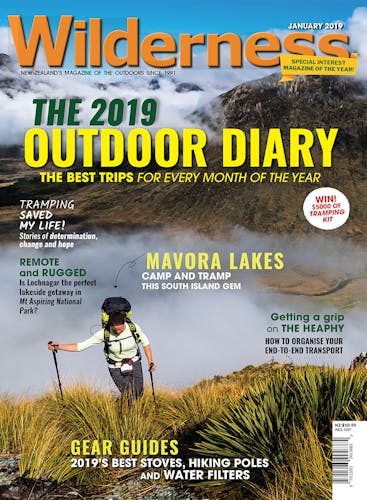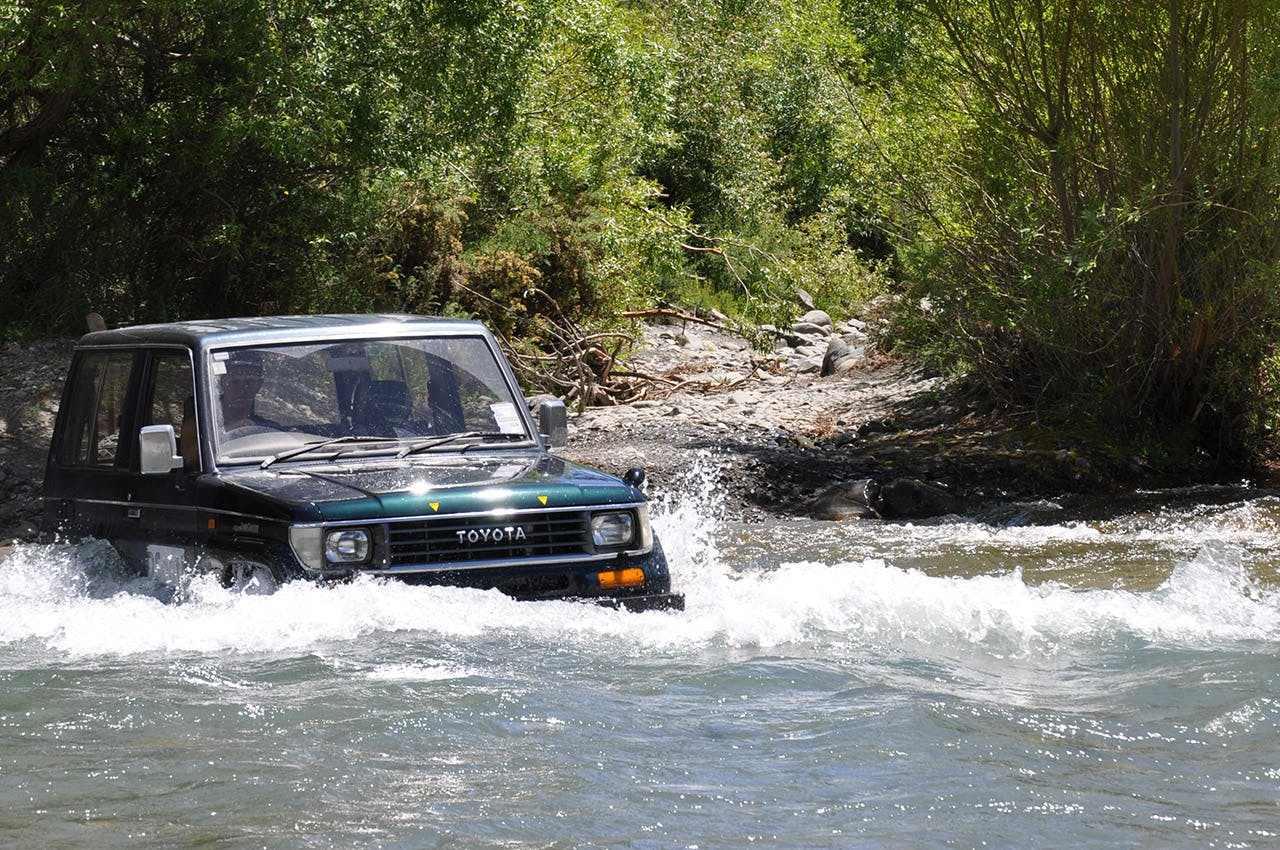Using a 4WD to get closer to the start of a tramping route is likely to involve a river crossing or two. Mark Wilson shares advice on how to safely overcome watery obstacles
If there is one thing about four-wheel-driving to never get complacent about, it’s river crossings. You’re only ever as good as your last one. I can still hear the words of one grizzled high country station owner after he gave me the OK to drive on his land: “And don’t drown yer truck. I’m sick of grown men cryin’ on my doorstep at two in the morning”.
Types of obstacle: Water obstacles come in many types and sizes, from puddles with attitude to fast-flowing mountain rivers. With all of them, make sure you know what you’re getting into before you get into it. Check the depth of the water and the nature of what lies beneath. Pools may have a soft, muddy bottom. With rivers, rocks or holes are more likely to pose a problem.
Use a rope: Attaching a rope to the back of a 4WD before it gets driven into swift, deep water means it can be hauled back more quickly if the driver gets into trouble. Loop the rope around the spare wheel or similar so that it doesn’t drag in the water.
Braided rivers: In braided river beds, look for the rapids. You will usually find the shallowest crossing at their head. Choose your exit point before entering but be aware that the best crossing is likely to be an arc rather than a straight line from bank-to-bank. Beware of trying to exit up a steep bank – there will often be a deep channel in front of it.
Gear: Select the right gear before you enter the water– this will usually be low first or second, depending on how firm or loose the bottom is – and if your vehicle has a manual transmission, avoid changing gear until you are on the other side – the action of pushing your foot on the clutch pedal can suck water into the transmission. Of course, if you get stuck and can’t go forward then you will have to engage reverse and head back to dry land. Reassess the crossing before trying again.
Crossing: Aim to keep a small bow wave moving ahead of you as you cross – this keeps the water away from the engine. Once through the water, test your brakes. Both disc and drum brakes lose efficiency when wet.
Brakes: If you are camping for the night just after a river crossing, be sure to dry your brakes otherwise you might find in the morning that water inside them has frozen and your vehicle will not budge. To do this, apply the brakes gently for a couple of seconds while moving forward. Leave the handbrake off overnight for the same reason.
Radiator: After wading through deep water full of mud, silt, peat, grass or weed, check the radiator isn’t clogged. Left on, the contamination can bake dry and block the radiator, leading to overheating. Clean out as much as you can on the spot, and wash the rest out with a low-pressure hose as soon as possible.
At home: After wading trips, check the oil in the differentials, gearbox and transfer case for signs of water contamination (the oil will look milky). If water did get in, you will need to change the oil as soon as possible.
– Mark Wilson is the author of 4WD South: 115 Off Road Adventures in NZ’s South Island








